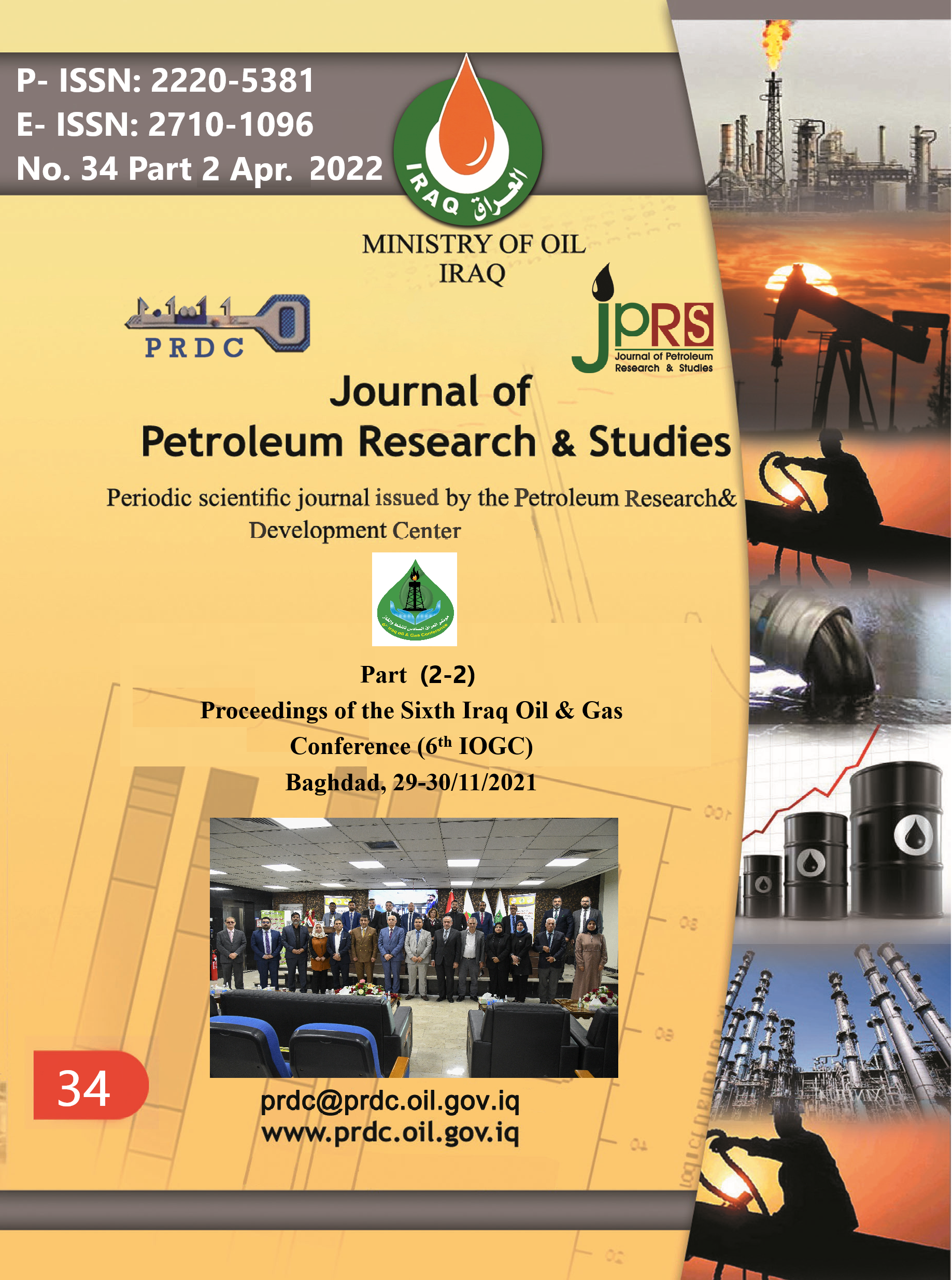Studying the effect ZnONP Deposited on ST37-2 by Pulse Laser Depositions Technique for Corrosion Protection Using in Oil Storage Applications.
DOI:
https://doi.org/10.52716/jprs.v12i1(Suppl.).638Keywords:
ZnO, nanocoating, ST37-2, PLD, Corrosion rate.Abstract
In the study, zinc oxide nanoparticles (ZnONP) were coated on carbon steel substrates via pulse laser deposition (PLD) process, in order to achieve passive layers of nanocoating. ST37-2 a type of steel is used in the manufacture of tanks that are used in oil applications, which suffers from corrosion, this will lead a large losses. Electrochemical technique (Tafel polarization completion) has been carried out for study the corrosion behavior of this steel coating type. The specimens of steel were examined in aqueous solution containing about 3.5 wt. % NaCl using polarization method, with power of hydrogen (pH) held to value 4.0, in order to evaluated the corrosion rate. ZnONP. Characteristics and topographic nanocoating by PLD technique were evaluated by Field Emission Scanning Electron Microscope (FESEM) and X-ray Diffraction (XRD) tests. Where semi uniform nanoparticles of ZnONP were achieved with a nanoscale approximately ranging from 33-56 nm, While XRD pattern indicated the presence of ZnONP with different crystal structures. In other side the input parameters of (PLD) technique were substrate temperature, number of pulse and fluencies energy have been examined, in order to study their influence on the rate of corrosion reduction. The results indicate that number of shoots pulse has a significant effect the corrosion rate in operation of PLD technique, which is highest among the contributions of the other parameters. Enhancement about 56% is achieved of ST37-2 coated with (ZnONP) deposition, as compared with uncoated steel.
References
Bahadori, Alireza. Essentials of coating, painting, and lining for the oil, gas and petrochemical industries. Gulf Professional Publishing, 2015.
Miesner, Thomas O., and William L. Leffler. Oil and gas pipelines in nontechnical language. PennWell Books, LLC, 2020.
Sulaiman, Qasim, Ali Al–Taie, and Dahlia Mohamed Hassan. "Evaluation of sodium chloride and acidity effect on corrosion of buried carbon steel pipeline in Iraqi soil". Iraqi Journal of Chemical and Petroleum Engineering 15, no. 1 (2014): 1-8.
Usman, AMINU D., and LINUS N. Okoro. "Mild steel corrosion in different oil types." International journal of scientific research and innovative technology 2, no. 2 (2015): 9-13.
Abdullah, Hiba Anwer. Corrosion behavior of steel (St 37-2) by using natural products as Inhibitors In Petroleum Medium. Diss. Department of Materials engineering, University of Technology, 2014.
Beavers, John A., and Neil G. Thompson. "External corrosion of oil and natural gas pipelines." ASM handbook 13, no. 05145 (2006).
Clark, Peter D., David R. Hornbaker, and Thomas C. Willingham. "Preventing corrosion in sulfur storage tanks." Alberta Sulphur Research Ltd Quarterly Bulletin 45, no. 2 (2008): 1-20.
LYUBLINSKI, E., Yu I. Kuznetsov, Marcelo Schultz, and Yefim Vaks. "Corrosion protection of tank product side bottoms." International Journal of Corrosion and Scale Inhibition 2, no. 2 (2013): 150-161.
M. J. Kadhim , A. S. Abbas and K. A. Sukkar, "Investigation Nano coating for Corrosion Protection of Petroleum Pipeline Steel Type A106 Grade B; Theoretical and Practical Study in Iraqi Petroleum Sector." Engineering and Technology Journal 35.10 Part A (2017).
Schweitzer, Philip A. Metallic materials: physical, mechanical, and corrosion properties. Vol. 19. CRC press, 2003.
Saji, Viswanathan S., and Joice Thomas. "Nanomaterials for corrosion control." current science (2007): 51-55.
Matteo, Cocuzza, Pirri Candido, Rocca Vera, and Verga Francesca. "Current and future nanotech applications in the oil industry." American Journal of Applied Sciences 9, no. 6 (2012): 784.
Downloads
Published
How to Cite
Issue
Section
License
Copyright (c) 2022 Ahmed S. Abbas, Iman Adnan Annon, Firas F. Sayyid

This work is licensed under a Creative Commons Attribution 4.0 International License.














